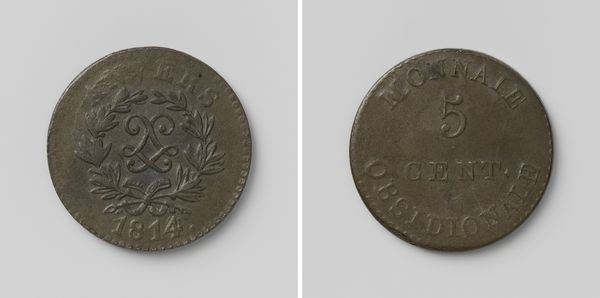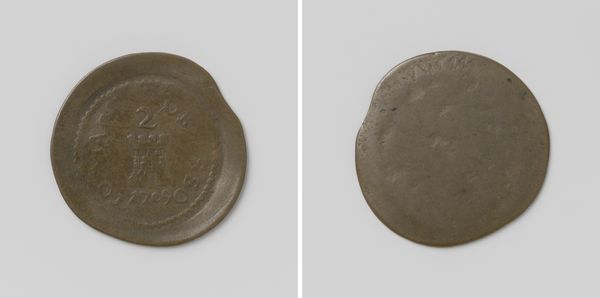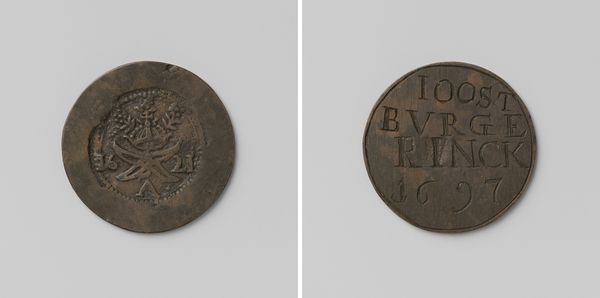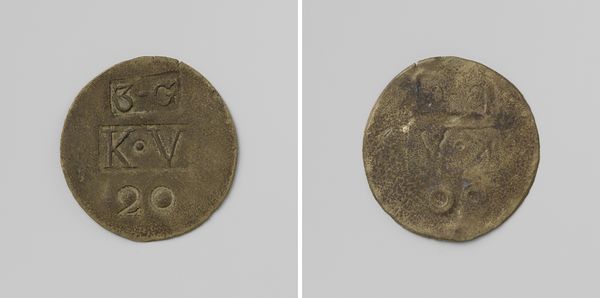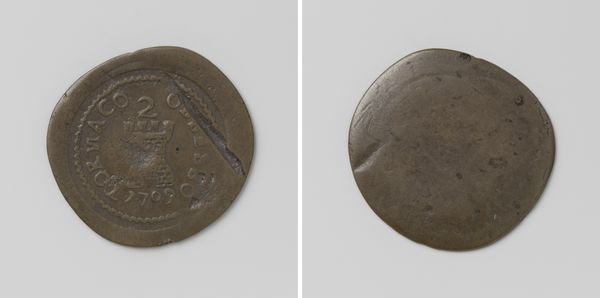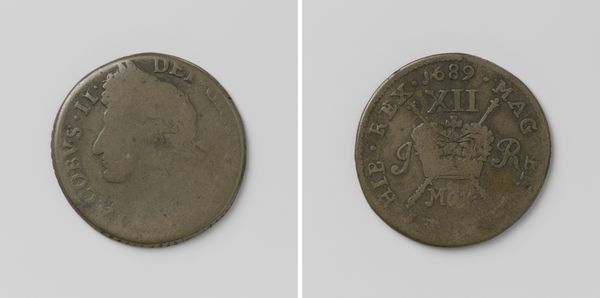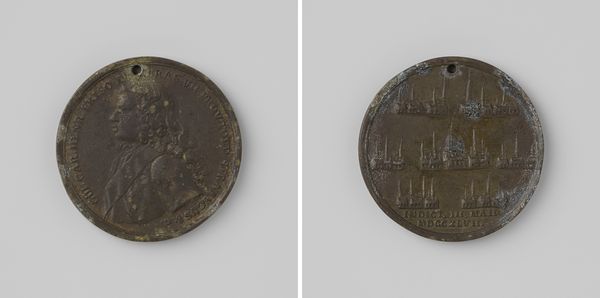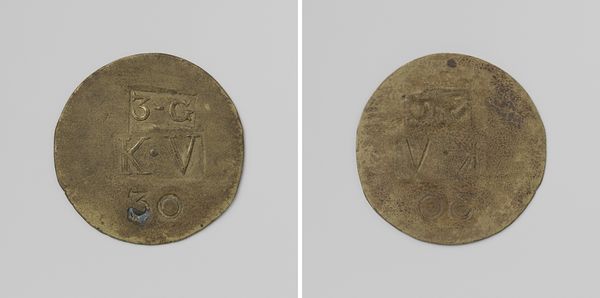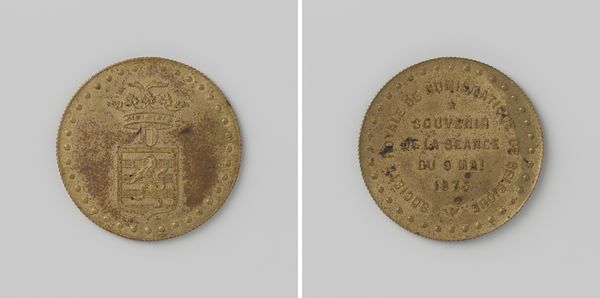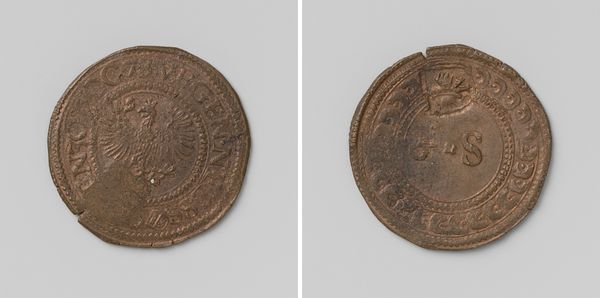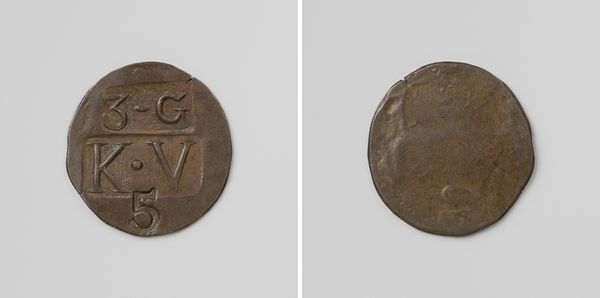
Acht stuiver, noodmunt uit Doornik door de bondgenoten ingenomen, geslagen op last van maarschalk de Surville Possibly 1709
0:00
0:00
print, metal, relief, engraving
#
baroque
# print
#
metal
#
relief
#
history-painting
#
engraving
Dimensions: diameter 2.9 cm, weight 6.59 gr
Copyright: Rijks Museum: Open Domain
Editor: This object is an eight-stuiver coin, a type of emergency money from Doornik, likely dating back to 1709. It was struck by Marshal de Surville when the city was occupied. The design is quite worn, and it's made of some kind of base metal. What do you see in this piece? Curator: It’s a fascinating example of the intersection between political power and everyday life, isn't it? We often forget that even something as mundane as currency can become a potent symbol of resistance or occupation. The coin, born from the necessities of war, speaks volumes about identity, resilience, and the financial pressures placed on ordinary citizens. Editor: Resilience in what way? Curator: Think about it: the fact that they were striking their own coins means they maintained some autonomy, some defiance, in the face of allied occupation. It raises important questions about who controls the narrative, the economic landscape, and ultimately, the very fabric of society in times of conflict. This isn’t just a piece of metal; it's a document of lived experience under duress. Does that give you any different feelings about the work? Editor: Absolutely. Seeing it as an object that signifies an assertion of power even while occupied is very insightful. Curator: Precisely. And considering how many contemporary conflicts center on controlling resources and economic infrastructure, it reminds us of the cyclical nature of history. Editor: I’ll never look at a coin the same way again! Thanks for the interesting points! Curator: My pleasure! It's about understanding that every object, especially something this charged, carries the weight of history, identity, and struggle.
Comments
No comments
Be the first to comment and join the conversation on the ultimate creative platform.

